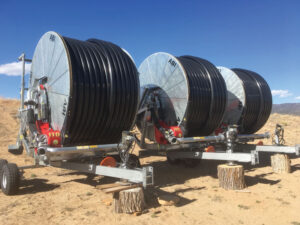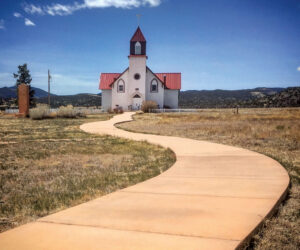By Peter Anderson
1. Where you sit determines the water’s alphabet. In the everyday shade where the horsetails grow, a white wave washes-washes-washes over a fallen tree. The letter “s” is shaped like moving water and sounds like steam rushing through a kettle spout. Right here anyway, “S” is this creek’s favorite letter. Yes, Yes, Yes. But it likes to make music—splashh-shooshh-shooshh-splashh—wherever it can find an “H” or two to run with. This is what the creek has to say. But wait. There’s more. Little waves that murmur through quiet shallows gurgle and slurp onto the ground below your feet.
2. When there is more snow up high, the creek has a daily pulse. Maybe you can hear it if you listen in the morning and then listen again in the afternoon. When the sun peeks over the ridge and morning light floods the shadowy nooks and crannies where the snow still lives, tiny streams find their way down through the talus, and join thousands of other tiny streams on their way down the mountain, and the creek will welcome them and rise as it does, and whatever it was singing in the morning, it will sing louder in the afternoon.
3. For the dipper or water ousel, the “hummingbird of blooming waters,” *moving water is social security. Let it rush and ripple. Let it foam and foment. It’s all good. Wherever the fast water flowers forth, the dipper knows there will be insects—mayflies, midges, and mosquitoes. Tired of the same old bugs? Try the underwater menu: dragonfly nymphs, caddisfly larvae, maybe some baby crawfish. Looking for a home away from annoying neighbors? High ledge, waterfall spray, rainbows in the afternoon shine. Views. Views. Views. No wonder the dipper is always bursting into song.
4. Moving water sings doo-wop mostly: Shah-Shah-Shah-Shalang-alang. Shah-na-na. So if you sit beside the creek long enough, you may want a watery word that carries a little more meaning. How about sashay? It has a watery sound to it, and even seems to suggest some watery characteristics. To sashay is to “proceed in a casual manner,” to “flounce in a showy manner, ” or to “move in a sideways manner,” and this creek has manners and does it all. Then you think of sashaying square dancers, how they circle around one another like the swirling currents in an eddy, and somehow you feel just a little bit closer to the everyday downward dance that is this water in this summer day creek. Language moves like water sometimes, but that’s another story.
5. What if a water molecule could tell you where it’s been?
I been away down deep on the ocean floor, surfed a big tsunami, rode a thunderhead to Yellowstone, settled in a geyser and come out with Old Faithful, rode the Snake into Idaho and down the mighty Columbia, holed up in a fog bank over the Olympic pee-ninsula, which finally rained me into the Pacific where I got swallered by an orca whale who spouted me out off the coast of Mexico, where I come in with the tide and hitched a ride on a northwester up through Arizonee and across the Great Divide, and over the valley on a moonsoon cloud that landed me in the Sangrees, where I stayed put up on a high ridge cause I liked it some, but then I froze up when it all turned cold and stayed the winter, and now I’m a surfin’ the thaw and whoowhee you just never know. And now your molecule seems to be channeling Johnny Cash singing “I’ve Been Everywhere Man”: “And that’s how I got here, man / Lord, spare me from a beer can/ Don’t know where I‘m a goin’ / Wherever this creek’s flowin’/ Headed down and to the west, man/ Keep movin’ cross this big land … Yeah, that’s how I got here, man/ Please spare me from a beer can/ Don’t know where I’ll be ….”
6. And then the rest of the creek says what it says so well: Hush. Hush. Hush.
* John Muir referred to the dipper, his favorite bird, as “the hummingbird of blooming waters.”
Peter Anderson recently retired from teaching in order to become a full-time word wrangler. He lives in Crestone.


